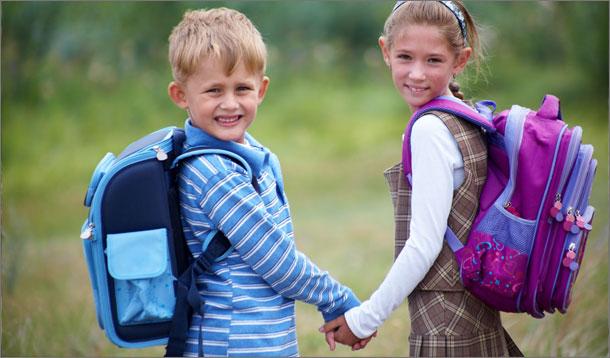2. The next and the biggest hurdle is the bed time. There will always be distractions, but don't allow a flexibility of more than 30 minutes on weekdays. Put your foot down if need be and create a lights out environment. Rest assured that the resistance won't last a month and your baby would start to yawn before you could drag him to bed.
3. Introduce your child to a day-planner or if you are not a gadget fan then stick to traditional timetables. Put reminders for important dates and paper submissions, keeping scope for sufficient action time; coax your child into action accordingly. He will be pleased with himself as he would be appreciated at school for never missing out any test dates or submissions. That is the time when he will begin to act without your efforts.
4. Get an agenda book or ask him to use his school diary for writing his tasks and not just complains and holiday notices. Make it mandatory to list all homework assignments, submissions, and tests date wise even if he can remember. Check what he has got on his plate for the day and help him manage his time. This is an important lesson for life: document things before they become a clutter.
5. This entire ordeal is useless if you would have to turn the whole house upside down to find the drawing book. So, make a special school zone in your home where things are orderly arranged and absolutely nothing from school stuff should be found anywhere else. Allot a different corner and separate closet. Use labels, sticky notes, and color codes liberally to keep things sorted. Help your child keep it arranged till he learns to do that himself.
6. Help your child remember things he should bring back home for the day as he leaves in a hurry. Ask him to divide his locker or desk drawer in two halves: left part may have things he wants to take back and right part will have those he doesn't need.
7. Get together in the school zone prior to retiring for the day and sort out the stuff for the next day. Notice if he has kept things correctly and guide him if he hasn't. It will help him take things he need for the next day, keep things organized for him, and will be easier for you to monitor his daily activities. Moreover, a daily supervised reshuffling is much better than cleaning an entire week's clutter.
8. Finally, don't fixate on these tips tyrannically. Make them an easy going part of your life and not an ordeal. Remember, that there' just one childhood and there's an entire lifespan for him to take stress and get busy.
This article is featuring tips for your kids make more organized. School in India and international school in India provides these facilities for easy going your kids life.
You have read this article kids /
Kids and Teens /
Tips Organized
with the title Kids and Teens. You can bookmark this page URL http://apt3e.blogspot.com/2014/05/tips-to-make-your-kid-more-organized.html. Thanks!



